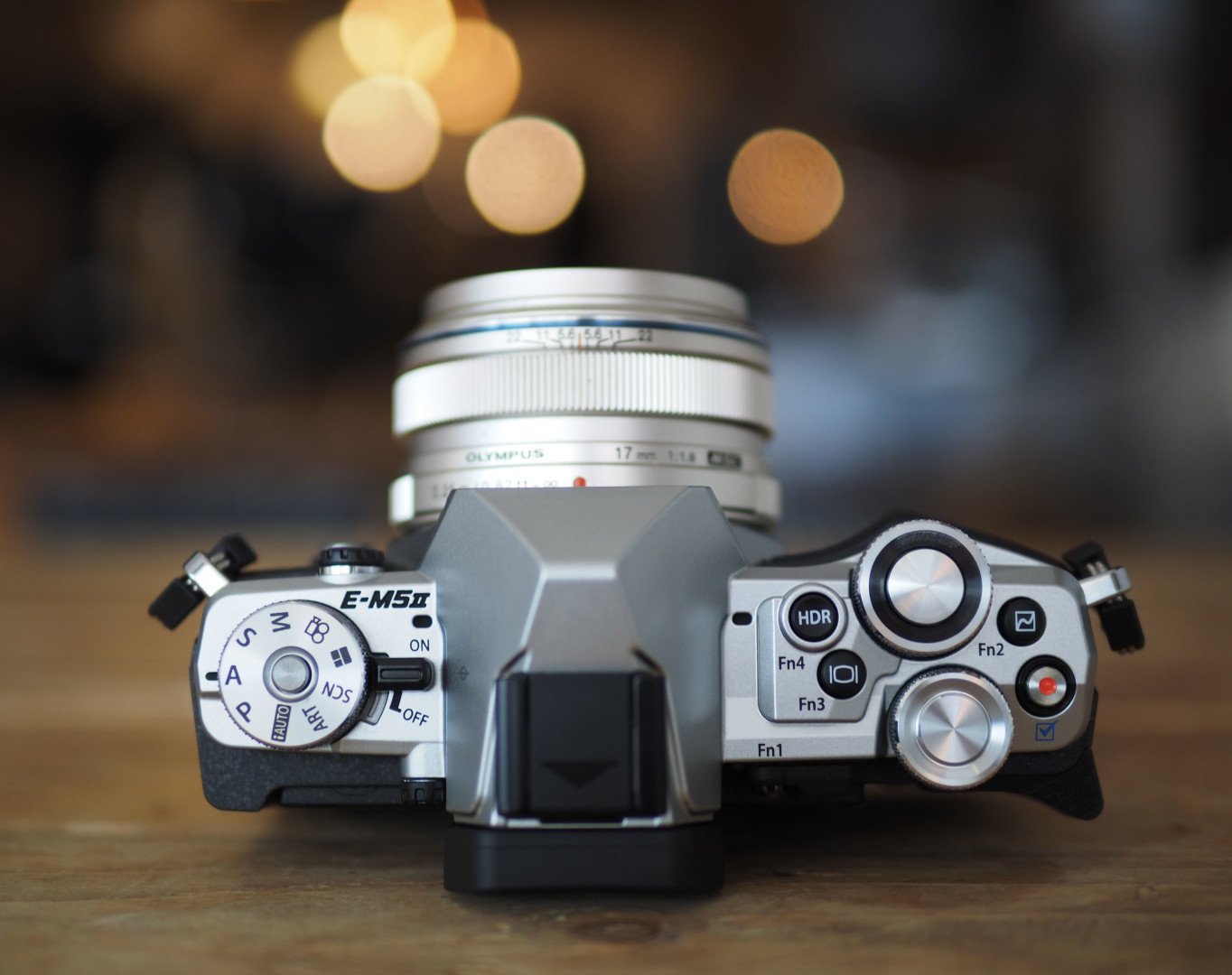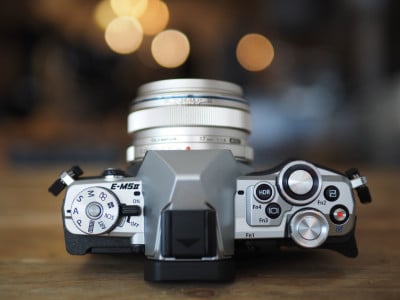Olympus OMD EM5 Mark II review
-
-
Written by Gordon Laing
Verdict
The Olympus OMD EM5 Mark II is arguably the most satisfying all-round camera I’ve tested to date, whether DSLR or mirrorless. It takes the charm of the original EM5, adds a bunch of features from the flagship EM1, complements them with a few new ones and even manages to improve some core capabilities too. The result is a camera that may be small, but feels confident to handle almost anything you throw at it.
While I adopted mirrorless for my personal photography five years ago, I only felt it truly came of age with the original OMD EM5 a couple of years later. It combined retro looks with modern functionality, delivering a highly enjoyable experience that was unbeatable at the time. Then the EM1 arrived with far superior ergonomics and the chance to deploy newer components including Wifi, a bigger viewfinder and better AF with legacy Four Thirds lenses. While I switched to the EM1 for my personal work, I still held a fondness for the original EM5 though, particularly its size and looks. Like many EM5 owners, I wondered if some of the EM1’s tech could ever make it into a possible successor.
Well, the new OMD EM5 Mark II delivers that upgrade and a great deal more than I expected. It inherits the larger and more detailed viewfinder of the EM1, along with its built-in Wifi, PC Sync port and 1/8000 shutter. The control dials and buttons have been greatly improved, feeling much more tactile than the original EM5. It becomes the first OMD to feature a fully-articulated screen which nicely complements a greatly improved movie mode. Amazingly the already superb built-in stabilization is now even better, and a new High Res Shot mode exploits it to deliver composite images which, under ideal conditions, can contain 40 Megapixels of detail. The EM5 Mark II also has a quieter shutter than its predecessors, is the first OMD to boast a completely silent mode, and offers even more customization than the EM1. Phew.

I’ve gone into considerable detail in my main review, but here’s a bit more on those main features. The built-in stabilization was always a highlight of Olympus bodies, but it’s now become eerily good on the EM5 Mark II. I measured an extra stop beyond what I could manage with the existing EM1, allowing me to actually handhold 24mm equivalent shots at one second with ease, and at two seconds if I was careful. This allowed me to shoot under very dim conditions without having to rely on bright apertures or high ISOs – indeed I rarely needed to shoot above 200 or 400 ISO for most of my personal work, which in turn addresses potential noise issues of the smaller sensor. I loved using it to shoot around cities at night or inside Cathedrals without ever resorting to a tripod – a boon when they’re banned in many buildings.
Of course if you want to freeze action, you’ll need a fast shutter which under dim conditions means using high ISOs. Under those conditions the smaller sensor of Micro Four Thirds will become gradually noisier than APSC above 1600 ISO, but if you mostly shoot still subjects, it’s amazing how low you can keep the sensitivity on the Mark II thanks to its improved stabilization. And at those low ISOs I have no complaints concerning the image quality, especially with the excellent lenses that Micro Four Thirds has rightly become famous for.
The bigger and more detailed viewfinder is well-known from the EM1, but for me the fully-articulated screen is the compositional highlight of the EM5 Mark II. I frequently shoot at high or low angles, but often in the portrait orientation for which a tilting screen is of no help. But now with a fully-articulated screen I can compose in this format at high or low angles and still twist the screen to face me. This coupled with the enhanced stabilization made it easy to grab this photo below, a half second exposure with the camera held high above my head to avoid converging lines.
| |||
That said, with built-in Keystone Compensation, inherited from the EM1, it’s possible to correct for converging lines as you compose. This is one of the many clever ways Olympus exploits a system with electronic composition. Along with a multitude of guides and previews there’s the innovative Live Bulb, Live Time and new Live Comp modes which let you monitor how a long exposure is building-up. Indeed long exposure photography is a delight with the EM5 Mark II: you can access shutter speeds up to 60 seconds directly in manual, or program Time or Bulb to auto-terminate after up to 30 minutes. I’m also pleased to report the EM5 Mark II avoids the EM1’s plague of hot pixels when noise reduction is disabled. Here’s an eight minute exposure without noise reduction as a demonstration.
| |||
Perhaps one of the most amazing things is how Olympus has managed to improve the ergonomics while essentially maintaining the size of the original. I loved the compact dimensions of the EM5, but hated its squishy buttons and thin dials. Now the EM5 Mark II takes inspiration from the EM1 with surprisingly chunky and tactile controls for a body this compact that make it much easier and more enjoyable to operate. The simple reposition of the Mark II’s control dials also means you can operate either of them while holding the camera with one hand – a situation I wouldn’t normally recommend, but one that’s quite possible with the stabilization. Oh and suffice it to say all those buttons and dials are customizable. The small body also makes it a very discreet camera, especially now with its quieter mechanical shutter and completely silent electronic shutter option.

The new 40MP High Res Shot mode is very interesting, exploiting the improved stabilization to shift the sensor over eight frames before combining them into one higher resolution image. In use it’s full of caveats: the camera needs to be mounted on a tripod, the subject needs to keep perfectly still over the total capture period (around one second for daytime shutter speeds), and your lens will need to be sharp and set to an optimal aperture to avoid diffraction.Olympus and retailers in particular need to be very careful how this is marketed as the conditions under which it works well are very limited. Ultimately the EM5 Mark II is not a 40 Megapixel camera. It is a 16 Megapixel camera with a clever option which advanced photographers might be able to exploit under ideal conditions. Get it right though and the camera will genuinely capture a higher degree of detail. I’ve gone into significant depth in the main review with 16 comparisons, so please do check it out for a detailed report on this exciting new mode. In the meantime though, here’s a quick preview showing how well it can work.
| ||||||||||||
| ||||||||||||
| ||||||||||||
So what can’t the camera do? Well, despite having quick single AF performance and a top speed of 10fps, the EM5 Mark II is not ideal for sports and action – or at least not the kind of action where the subject is approaching or receding at speed. The continued reliance on a contrast-based AF system means it struggles with continuous autofocusing for all but leisurely subjects, and only then when shooting at the lower burst speed of 5fps. This remains an Achilles’ Heel for the OMD system and if you regularly shoot subjects that approach or recede at high speed, you’ll have more success with Sony’s A6000 or Fujifilm’s XT1, so long as the action is kept in the middle of the frame for the latter. Of course if your action takes place at a mostly fixed distance you’ll be fine with the EM5 Mark II. And it’s also important to give a respectful nod to the single AF performance that’s not just very quick, but works with one of the best face detection systems around, making portraits a doddle.
Some will also complain about the sensor that’s smaller than APS-C and that’s remained 16 Megapixels in its native resolution for several generations now. But for me the small sensor is actually a benefit, as it allows compact but great quality lenses to be produced, and coupled with the amazing stabilization, you may rarely actually run into sensitivities where noise becomes an issue. I know I don’t for most of my own photography. I should also add that I can record more detail with 16 MP Micro Four Thirds camera fitted with a fair lens than 24 MP APSC camera fitted with a basic kit zoom. Then there’s the new 40MP mode which, again, may only work well in very specific conditions, but does at least give the EM5 Mark II the opportunity to out-resolve rivals.
It would also be remiss of me not to mention the absence of 4k video for a camera that will remain current into 2016. I’m not surprised Olympus hasn’t implemented 4k here as video has never been their priority, although to be fair, the movie mode on the EM5 Mark II is much improved over earlier models. Indeed, a big step in the right direction.
Oh and one last thing: in the default configuration with Quick Sleep enabled, the camera can become slow to wakeup. I’d recommend disabling it and accepting the hit on battery life. Definitely carry a spare.
Which OMD should I buy? EM5 Mark II versus EM1
 | ||
The EM5 Mark II represents a decent upgrade over the original EM5, but one of the biggest questions for potential buyers will be whether to go for it or the flagship EM1. The two cameras may look quite different, but they actually share a great deal in common, so I’ll just detail the differences.
In its favour the EM1 is a little larger with a taller and deeper grip (although you can boost the EM5 Mark II’s grip with an optional accessory). The EM1’s buttons and dials are also chunkier which all makes it more comfortable for those with bigger hands. There’s also more buttons on the EM1, although the both cameras share roughly same degree of customization. The EM1 has a deeper buffer, allowing it to shoot many more RAW files in a burst, and a recent firmware update claims to support continuous AF at the top speed of 10fps versus 5fps on the Mark II – although I’ve yet to test this. The EM1 also features embedded phase-detect AF points on the sensor to improve focusing with older legacy Four Thirds lenses.
In its favour, the EM5 Mark II has better stabilization, a fully-articulated screen, a quieter mechanical shutter, a completely silent electronic shutter option, a greatly improved movie mode, and the 40MP mode which can capture finer detail under ideal conditions. It’s smaller too which some may like. Oh, and in some regions it’s also a little cheaper even at the full RRP.
So the major reasons to opt for the EM1 over the EM5 Mark II are better compatibility with older Four Thirds lenses, a deeper buffer, potentially better continuous AF (yet to be confirmed in my tests), and a body that’s more comfortable for those with bigger hands. I think for everyone else though the EM5 Mark II is the preferred body, although potential discounts on the EM1 could make it an attractive alternative. See my Olympus OMD EM1 review for more details.
Olympus OMD EM5 Mark II final verdict
It should be clear by now I’m very fond of the OMD EM5 Mark II. It improves on two bodies I already liked a lot, taking the best of both, improving some aspects and adding more besides. The compact weatherproof body looks and feels great, the viewfinder and screen allow easy and comfortable framing, the various modes, views and previews exploit electronic composition like no other, it shoots quickly and quietly, and the stabilization is eerily good. The icing on the cake is the 40MP mode – think of it as a bonus that only works under very specific conditions and advanced photographers will find it delivers a useful boost in resolution.
Once again if you need a camera that delivers very low noise at high sensitivities or can track a subject that’s approaching or receding at high speed, then there’s better choices available. Likewise if you want pro-level video. But for everything else, the OMD EM5 Mark II is a very satisfying camera to shoot with and one I can highly recommend to almost any photographer, including owners of the original EM5 looking to upgrade. I can think of no better all-round camera for the money right now.
Good points
Small weatherproof body with great controls.
Fantastic built-in stabilization works with any lens.
Big, detailed viewfinder and fully-articulated touch screen.
Fast accurate focusing with great face and eye detection.
Built-in Wifi with powerful mobile app. USB tethering too.
Huge degree of customization.
Clever long exposure modes, previews and corrections.
40MP mode can deliver fine detail under strict conditions.
Movie frame rates from 24 to 60p.
Bad points
Native image quality similar to previous models.
40MP mode requires specific conditions and lenses to shine.
Continuous AF becomes less confident with fast subjects.
Timelapse and miniature movies encoded at low frame rate.
Slow wakeup when Quick Sleep is enabled.









